Many products are made of sheet metal – drainage systems, shaped parts for roof cladding covered with corrugated steel or metal tiles, basement moldings, corners for buildings made of corrugated steel, etc. All this can make a special bending machine – for sheet metal. How to make a sheet bender with your own hands and we will talk in this article.
Contenu de l'article
Types of sheet benders
There are three types of sheet bending machines:
- Simple manual, metal bending in which metal bending occurs when force is applied in a certain place. These units make it possible to bend sheet material in a straight line at any angle – from a few degrees to almost 360 °.
- Hydraulic machines in which the sheet metal is bent to the shape of a die by means of an impact. The matrix can be straight, can be curved. This equipment is professional, used in medium and large capacity enterprises.
- Roller or roll benders. In them, the sheet of metal is not bent in a straight line, but rounded. With the help of this equipment, you can make your own pipes or other similar products.
All these devices are referred to sheet bending machines. With your own hands to make the easiest unit of the first group, a little more difficult – the third (rollers for sheet metal). Here we will talk about them – from how to make a leaf bender with your own hands.
Simple manual
Shaped parts made of metal cost a lot of money. Even more than corrugated steel or metal tile, so it makes sense to make a simple machine for sheet metal bending, and with its help to make as many corners, castings and other similar parts as you need, and only under their dimensions.
- Drawing of a bending machine for sheet metal
- Sheet metal bender – side view
- Another model
If you’re worried about appearance, you should be. On sale today there is sheet metal not only galvanized, but also painted. In all designs, the sheet is fixed tightly, so that when working does not slide on the table, and therefore the paint is not erased and scratched. In places of bending it is also not damaged. So the look of the products will be quite decent. If you try, they will look even better than what is sold on the market.
Powerful sheet bender from the Taurus
For this sheet bending machine you will need a flat surface (table), preferably metal, three angles with a shelf width of at least 45 mm, metal thickness of at least 3 mm. If you plan to bend long workpieces (more than a meter), it is desirable to take wider shelves and thicker metal. You can use tavras, but this – for bending sheets of metal of great thickness and length.
You will also need metal door hinges (two pieces), two screws of large diameter (10-20 mm), “thumbs” on them, a spring. You will also need a welding machine – to weld the hinges and make holes (or a drill with a metal drill).
For a homemade sheet bender was used tavr on 70 mm – three pieces of 2,5 m, two bolts 20 mm in diameter, a small piece of metal with a thickness of 5 mm (for cutting out the ears), a spring. Here is the order of operations:
- Two Taurus are folded, at both ends cut notches in them for the hinges. The edges of the notches are beveled at 45°. The third Taurus is cut in the same way, but the depth of the notch is a little more – it will be a clamping bar, so it should walk freely.
- Weld the hinges from both sides (weld from the front and the back).
- To one of the timbers (the one farthest from you, if you “open” them) weld two braces on each side. They are necessary to be able to install the clamping bolt of the clamping bar on them.
- Weld the bolt nut to the brackets.
- Install the clamping bar (third cut T-beam), weld metal plates with a hole in the middle at the top. The diameter of the hole is slightly larger than the diameter of the bolt. Center the holes so that they are in the same vertical position as the welded nut. Weld.
- Cut the spring so that it raises the clamping plate by 5-7 mm. Put the bolt through the “ear” of the clamping bar, put the spring on, tighten the nut. After installing the same spring on the other side, the clamping plate is lifted by itself when unscrewed.
- Weld two pieces of rebar to the head of the screw – as handles for screwing.
- Weld the handle to the movable (nearest to you) taurus. All, you can work.
This option is very powerful – you can bend long workpieces and a sheet of solid thickness. Not always such a scale is in demand, but you can always reduce. The video offers a similar design of a smaller size, but with a different fastening of the pressure bar. By the way, no one prevents you from installing a spring on the screw – it will be easier to lift the bar. The interesting thing about this design is that you can make flanging on it, which usually such devices can’t do.
From a corner with a different type of clamping bar
This model is welded from a thick-walled angle, the bed is made as an ordinary construction gantry, which is welded from the same angle. The handle is from a luggage cart. Interesting design of screws – they are long, the handle is bent in the form of the letter “G”. It is convenient to unscrew/screw.
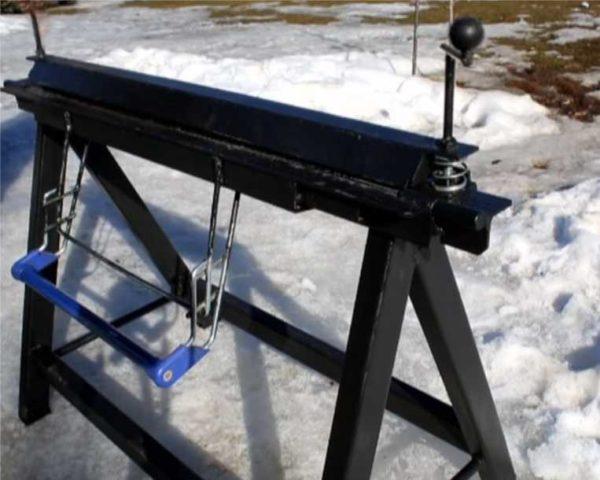
In this homemade machine for bending sheet metal, there are many features:
- The corners are not shelves to each other, but are directed to one side. Because of this, the attachment of the hinge turns out not the most convenient, but it is possible to make.
- On the bend of the far (fixed) corner welded on both sides of the small plates-supports for the clamping bar.
- On the same strip welded screw nut (on both sides).
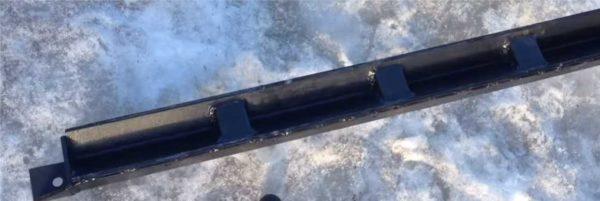
Now let’s move on to the construction of the clamping bar (on the photo above). It is also made of angle, but it is placed on the machine with a bend upwards. In order to prevent the bar from bending during operation, reinforcements – crosspieces made of metal – are welded on. At both ends of the bar are welded small metal pads, in which holes for bolts are drilled.
Another important point is that the edge that faces the bending point is cut off in order to obtain a sharper bending angle.
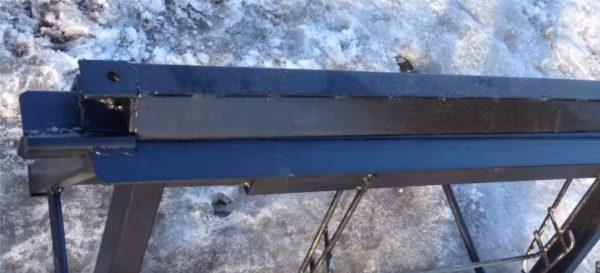
The clamping bar is placed on the machine and a spring is placed in the place where the nut is installed. The handle is put in place. If it does not press the bar, it is raised above the surface by the spring force. In this position, the workpiece is tucked under it, aligned and pressed down.
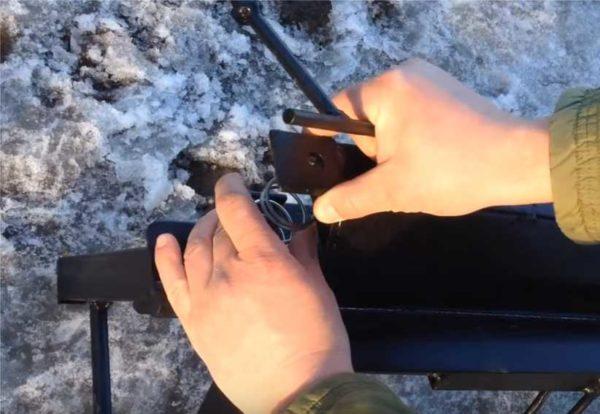
Not a bad option for home use. Thick metal to bend will not work, but tinplate, galvanizing – without difficulty.
Rollers for sheet metal or roll bender.
This type of sheet metal bender can have three types of drive:
- manual;
- hydraulic;
- electric.
With their own hands make rollers for sheet metal with manual or electric drive. In manual ones put 3 shafts, in electric they can be 3-4, but usually also three.
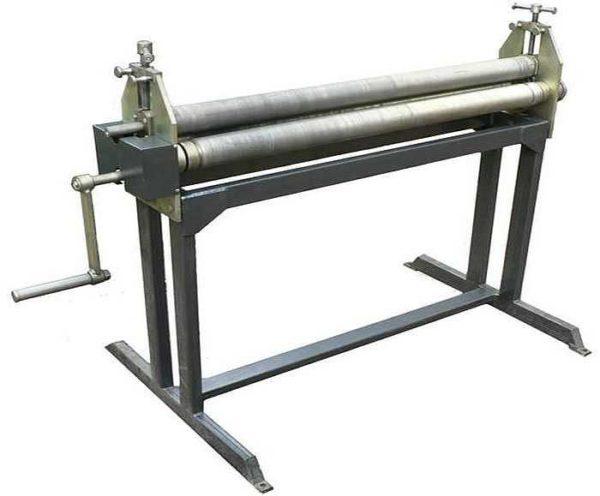
For this machine you need a good reliable base. This can be a separate bed or some kind of workbench or table. The basis of the design is the rolls. They are made of the same size. The two lower ones are installed stationary, the upper one – movably, so that in the lower position it is located between the rollers. By changing the distance between the lower rollers and the upper one, the radius of curvature changes.
The machine is driven by a handle attached to one of the rollers. The torque is then transmitted to the other rollers via sprockets. They are selected so that the speed of rotation is the same.
If the equipment is supposed to produce pipes, the upper roller on one side is made removable, with a quick locking system. Once a sheet has been rolled into a pipe, it cannot be pulled out in any other way.

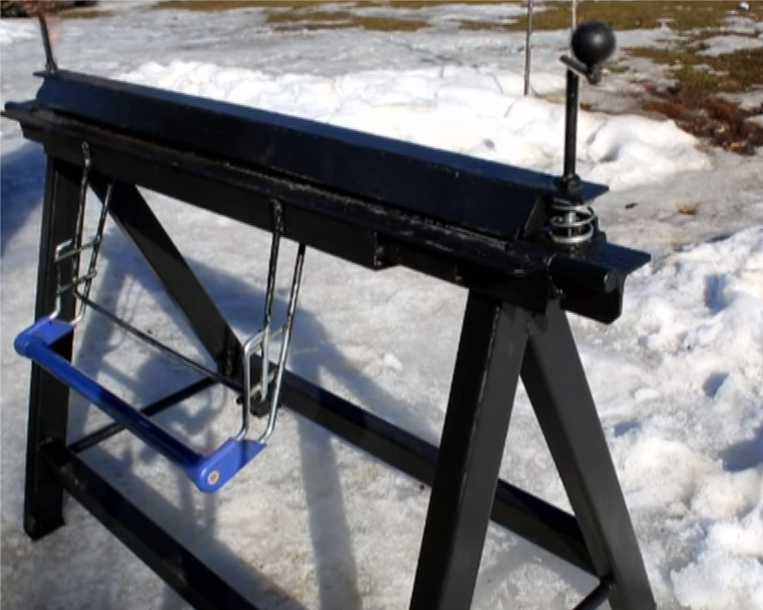
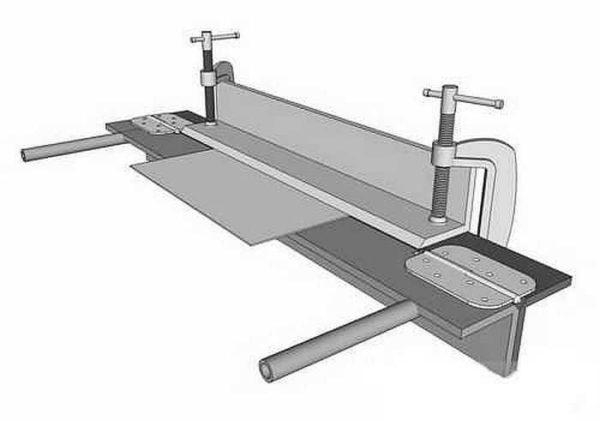
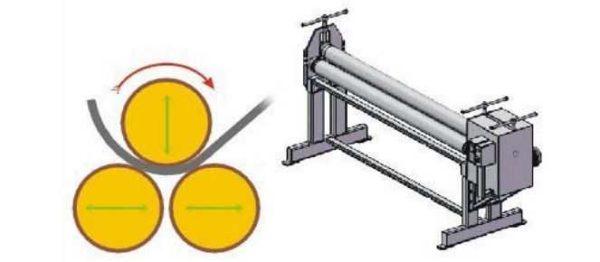
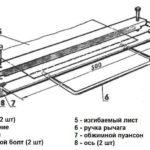
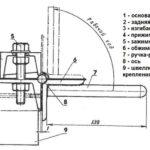
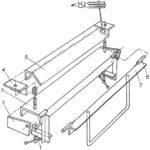
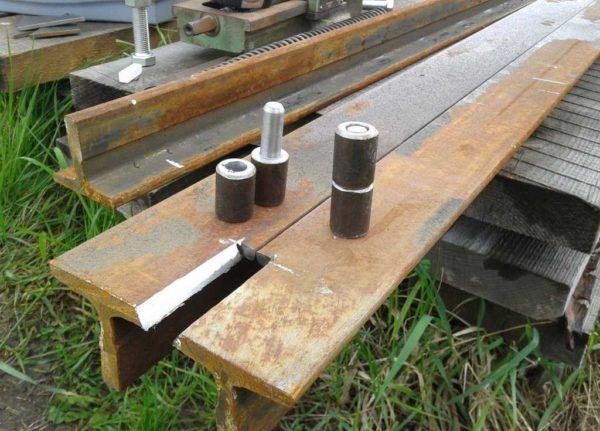
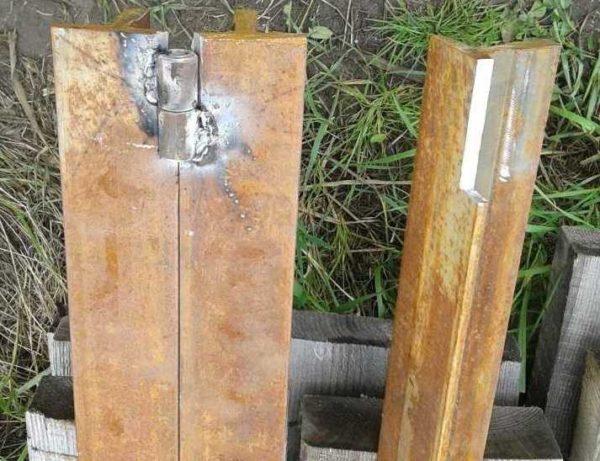
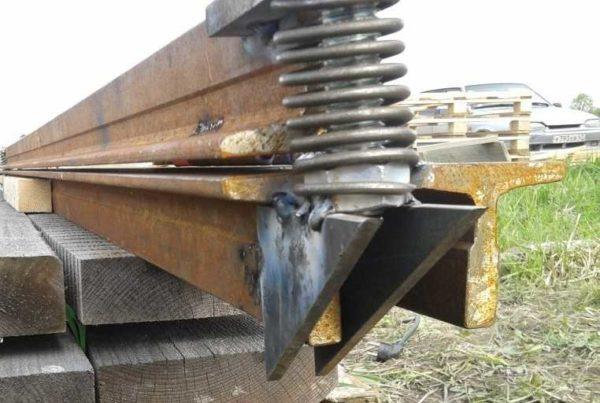
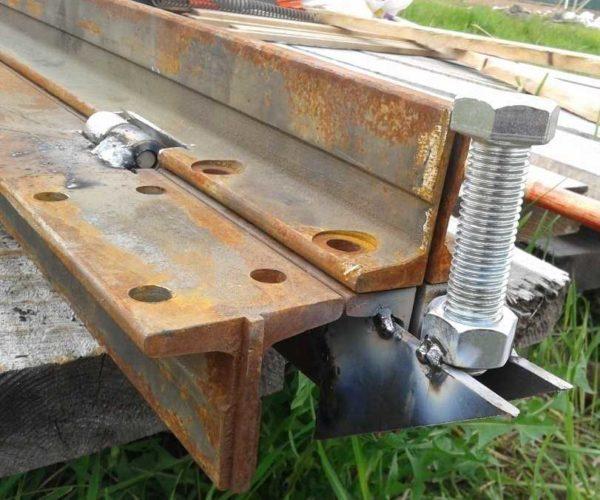
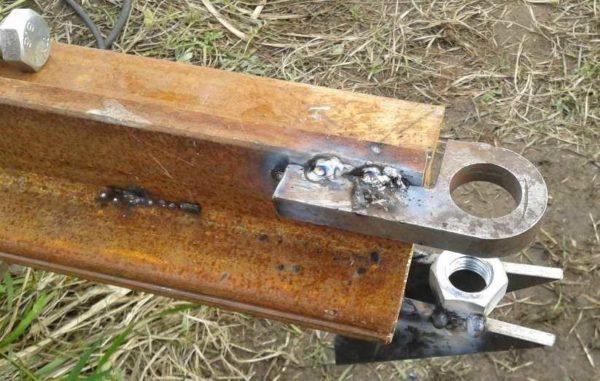
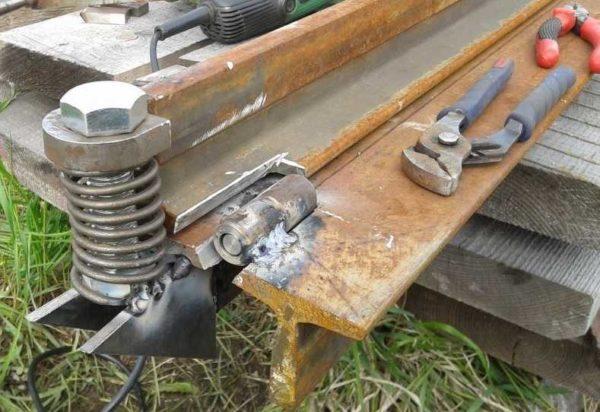
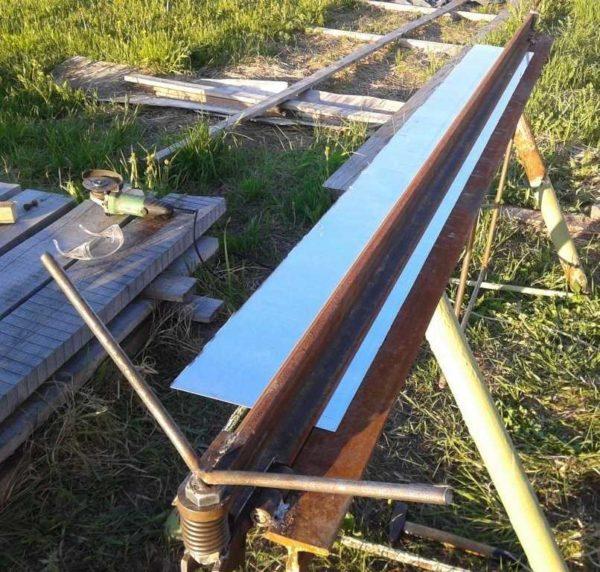
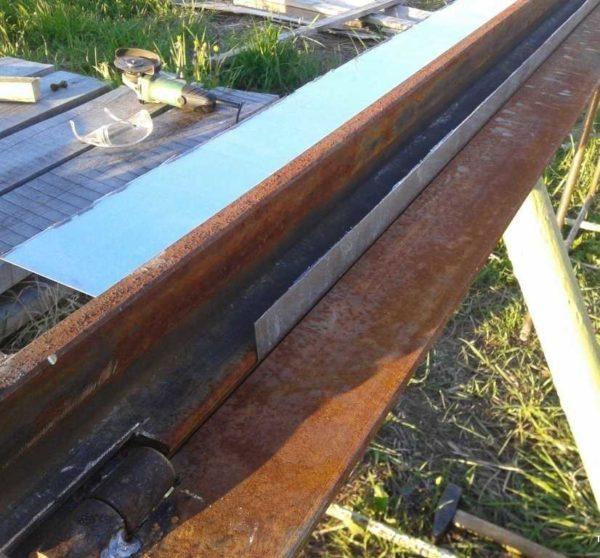
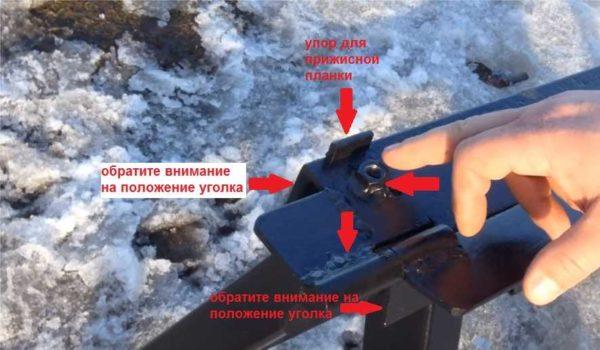
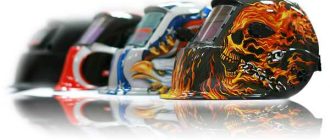
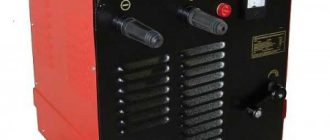

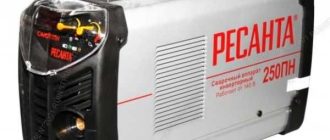
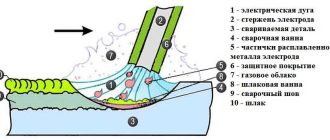
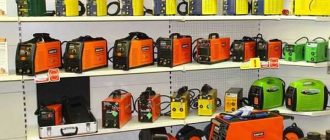
As a DIY enthusiast, I once built my own sheet metal bender. It was a game-changer for my projects! The simplicity and effectiveness made bending metal so much easier. Kudos to all the makers out there sharing their tips! You inspire us to create and innovate. Keep it up!